This site uses only a few technical cookies necessary for its operation. By continuing to browse, you accept their use.
To find out more...
To find out more...
How easy is it to chop herbs?
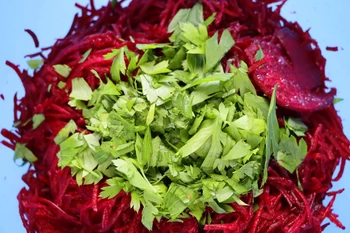
Whenever you have fresh herbs - parsley, chervil, coriander, mint, etc. - to incorporate into a recipe, we tell you to chop them up.
In this case, "chopping" means separating the leaves from the stems, keeping only the leaves, and chopping them more or less finely.
It's not very complicated, of course, but let's take a look at a few ways of doing it, and how to avoid certain pitfalls.
In this case, "chopping" means separating the leaves from the stems, keeping only the leaves, and chopping them more or less finely.
It's not very complicated, of course, but let's take a look at a few ways of doing it, and how to avoid certain pitfalls.
13 K 5/5 (3 reviews)
Keywords for this post:TipsTricksHow toHerbChopCutMinceParsleyLast modified on: September 12th 2023
How easy is it to chop herbs?
Preparation
In most cases, as mentioned above, the first step is to separate the leaves from the stems, keeping only the leaves, the most tender and fragrant part of the herb.This is done because, as a general rule, the stems are always a little hard, and not very pleasant raw. But you don't necessarily have to throw them away: parsley stems, for example, are wonderful for cooking in a sauce or dish, even if you have to remove them after cooking.
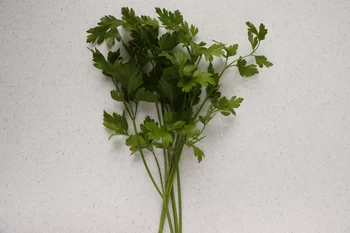
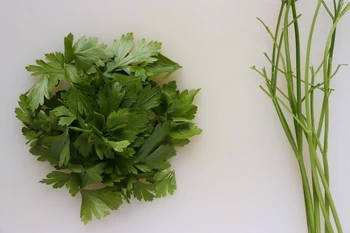
Let's chop!
Basically, just place the leaves on a chopping board, then chop them more or less finely, with a chopper or a knife, and you're done?Well, it's not quite that simple. First of all, you have to get rid of a common misconception: "The finer the chop, the better the taste".
No, it's a culinary legend, because the finer you chop, the more the herbs oxidize and lose their flavour, and the more some of their flavour is lost on the utensils. Cooks have a phrase for this, they say "taste is on the board".
In any case, as a general rule, herbs age very badly once chopped, so whatever the method, you have to be quick.
So chop them, but don't overdo it, proceed quickly, and incorporate the herbs into your recipe as soon as they've been chopped. Don't let herbs that have already been chopped sit on a corner of your work surface, as they will quickly lose their taste.
How to chop
There are several ways to proceed, but here are 3:Classic method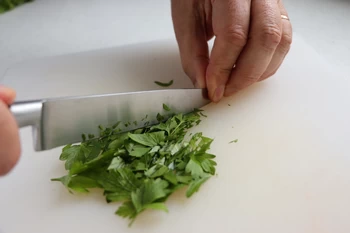
It's very simple, but you'll need to make quite a few strokes of the knife to chop all the herbs, which will need to be grouped together from time to time on the board.
The dumpling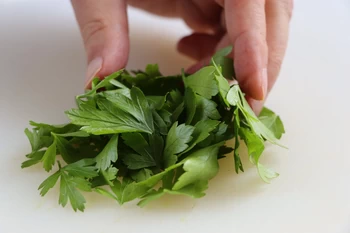
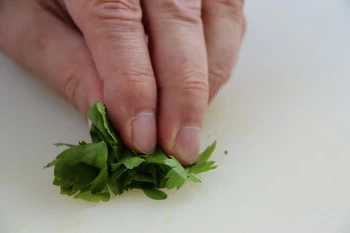
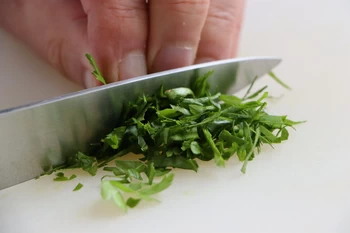
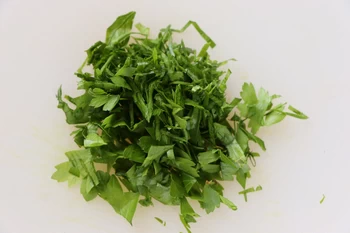
It's very efficient, and the herbs are chopped very quickly.
By the glass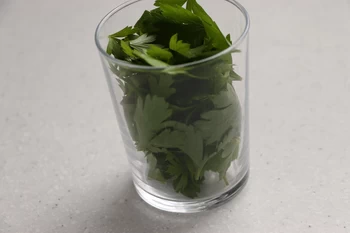


The herbs are placed in a glass, and a pair of scissors is used to cut directly into the glass, until the desired texture is obtained.
It's even quicker and more efficient, and all you have to do is pour the contents of the glass into the recipe. This is definitely my preferred method.
An electric chopper
As you may have noticed, all these methods are manual, so what about electric choppers?They're handy, of course, for chopping herbs and other things at the same time (garlic, onions, etc.), but they're admittedly not indispensable, and with them you tend to chop too finely, by pressing the button a little too long. If you use one, remember to chop for a few seconds at most.
To sum up: Chopping herbs is a simple matter, you just have to remember 1) not to chop too finely and 2) not to keep your chopped herbs waiting (incorporate them into your recipe as soon as they have been chopped).
Lasts posts
Butter vs. grease
We often read in a recipe where a pastry is put into a mould that, just before pouring, the mould should be buttered or greased. But what's the difference between these 2 terms?December 1st 20251,2015
Getting out of the fridge early
Very often when you're cooking, you need to take food or preparations out of the fridge, to use them in the recipe in progress. There's nothing tricky about this: you just take them out of the fridge and use them, usually immediately, in the recipe. But is this really a good method?November 24th 20251,2085
Who's making the croissants?
When you look at a bakery from the outside, you naturally think that in the bakery, the bakers make the bread, and in the laboratory, the pastry chefs make the cakes. It's very often like that, with each of these professions having quite different ways of working, but sometimes there's also one...November 23th 20251,101
Oven height
When we put a dish or cake in the oven, we naturally tend to put it on the middle shelf, and that's what we usually do. But in some cases, this position and height can be a little tricky, so let's find out why.October 8th 20252,9965
The importance of sieving
In recipes that use a fine powder (flour, powdered sugar, etc.), you'll often see the advice to sift before using it. To sift is to pass the powder in question through a sieve (a very fine strainer) before incorporating it into your recipe. It's often advice, but is it really useful?September 3rd 20257,7003
Other pages you may also like
Raising (or leavening) agents
When we want to make a dough or batter rise when baking, either in patisserie or bread-making, we need to use a raising agent or leavening agent, one of which is called leaven. In the context of baking, a raising agent is simply what "makes something rise". It is a substance which, when added to...June 16th 202157 K4.8
The 3 secrets of Parisian flan
A flan Parisien, or boulanger, is a simple yet delicious cake. A cream, a mixture of milk, eggs and sugar, is poured into a raw pastry base and baked in the oven until the pastry and cream are cooked. This is the simplest version of the recipe, probably the original one, but nowadays the cream...July 21th 202316 K4.7
Different kinds of pastry and dough
When cooking in general, and particularly in baking, we can make and use many different kinds of pastry and dough. All built on the same "base": flour - a powder to which we add fat, liquid or both to produce the dough which is then cooked. .November 6th 2012111 K 14.0
What is the difference between bakery and patisserie?
This is a question that you may well have asked yourself and which I will attempt to answer. In France the two trades of "boulangerie" (bakery) and "pâtisserie" (patisserie and confectionery) have always been quite distinct, but where exactly do the boundaries lie? .February 7th 2017134 K 14.1
The golden-brown finish on puff pastry
Let's take a look at the tricky matter of producing puff pastry with an attractive, golden-brown finish. French pastry chefs call this "dorure" (literally, "gilding"). Behind this quirky term there lurks a real problem (and the solution): when using puff pastry (pâte feuilletée) for a pie, or...February 8th 201847 K 24.6
Post a comment or question
Follow this page
If you are interested in this page, you can "follow" it, by entering your email address here. You will then receive a notification immediately each time the page is modified or a new comment is added. Please note that you will need to confirm this following.
Note: We'll never share your e-mail address with anyone else.
Alternatively: you can subscribe to the mailing list of cooling-ez.com , you will receive a e-mail for each new recipe published on the site.









